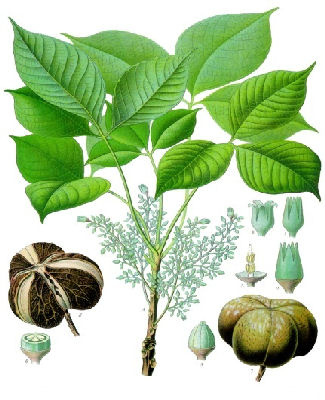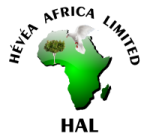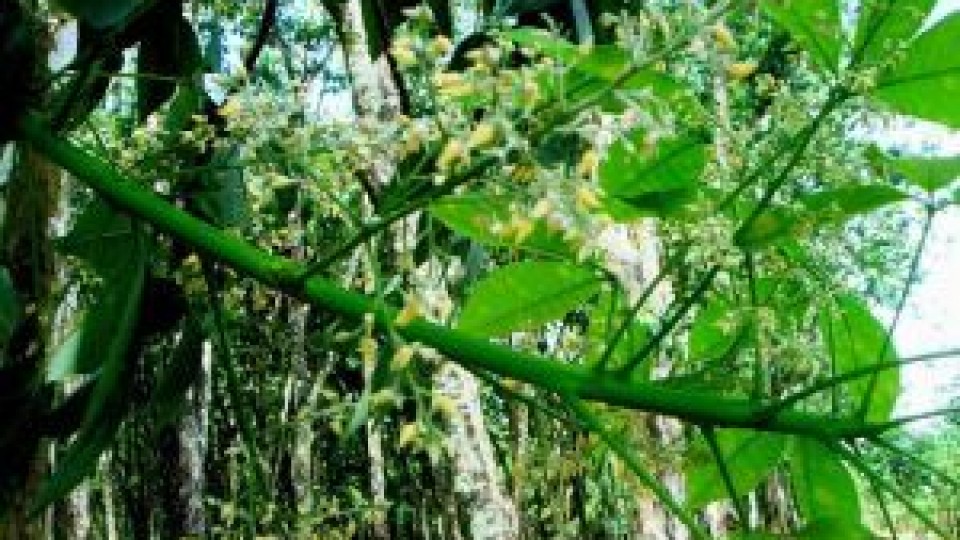Factsheet
HEVEA BRASILIENSIS – PARA RUBBER TREE.
 Synonym
Synonym
Siphonia brasiliensis
Common name
Arbol de Caucho, Jebe, Para rubber, Parakautschukbaum, Seringueira, Sharinga, Siringa.
Family
Euphorbiaceae (Spurge family)
Overview
A native plant to the Amazon Rainforest, this is a tree with a smooth and straight cylindrical trunk up to 120 feet tall. The bark is grayish and the leaves alternate trifoliolate. It has pale-yellow flowers that are small and fragrant.
This plant has large, woody capsular fruits with three lobes; each of these contains one hard, shiny seed. When ripe, the fruit (seedpod) bursts open and the seeds are scattered around, up to 110 feet from the tree.
Para rubber tree has sticky, milky latex (natural rubber) that coagulates; it is a latex polymer with high elasticity, flexibility and resilience. The Rubber tree is the major commercial source of natural rubber and is used for many rubber products.
The trees start yielding latex after 5–8 years and have a productive lifespan of 25–30 years.
Hardiness
USDA zone 9 – 11.
Propagation
seeds or vegetative.
Culture
Plant directly or make seedlings; this tree needs heavy rainfall and cannot withstand frost. Rubber trees grow best at daytime temperatures of 26° – 28° Celsius with an annual rainfall of 2,000 – 3,000 mm, and up to an altitude of about 500 meters. It will perform well on most soils as long as there is adequate drainage.
Seed viability drops as soon as fruits are collected. The best results are obtained with fresh seed grown in partial shade.


Comments
No comment yet.